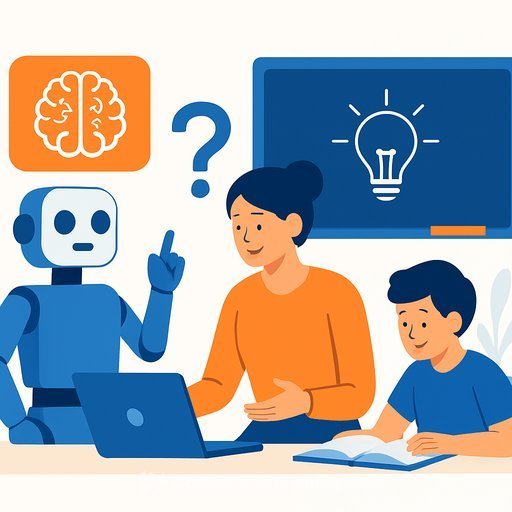Conversation-first learning in the age of AI
Generative AI makes recall easy and undetectable homework help easier. That exposes a weak spot in education: teaching for reproduction instead of reasoning. A new paper in the British Journal of Educational Technology argues for a shift to dialogic learning-students and teachers thinking out loud together, testing ideas, and comparing perspectives.
Rupert Wegerif and Imogen Casebourne make the case plainly: if an AI can pass your exam, the exam is asking the wrong thing. The goal moves from "Can you repeat it?" to "Can you argue it, critique it, and build on it with others?"
What "double-dialogic pedagogy" means
The researchers propose a two-part model:
- Dialogic teaching: classrooms that use structured conversation to work through problems. Students explain, challenge, and refine ideas. Teachers guide, probe, and model reasoning. AI can act as a coach-not a ghostwriter.
- Dialogic with knowledge: students engage with the "conversation so far" in a subject-testing their thinking against major theories and thinkers. AI can simulate those voices to stress-test ideas.
What this looks like in practice
Replace a gravity lecture with a shared question: "Why do objects fall to the ground?" Students propose answers in groups, then run them past an AI playing Aristotle, Newton, and Einstein. They see where their ideas hold up, where they break, and what each theory explains.
That puts learners inside the disciplinary conversation, not outside it trying to memorize the highlights. Concepts stick because they're earned through argument and evidence.
Tools being explored
- ModeratorBot (in development at Cambridge): joins group discussions, nudges quieter voices in, asks open questions, and prompts perspective shifts.
- QReframer (Simon Buckingham Shum): doesn't answer questions; it interrogates assumptions to deepen critical reflection.
- BCause (Open University prototype): supports balanced, civil online deliberation and uses AI to summarize discussions.
The risk: AI as a cognitive shortcut
If students outsource the hard parts of thinking, progress stalls. Wegerif calls this a "cognitive poison." The fix isn't banning AI; it's redesigning tasks so AI becomes a partner in reasoning, not a replacement for it.
That means moving away from homework that's easy to auto-generate and toward live discussion, iterative drafts, oral defenses, and collaborative problem-solving that make thinking visible.
Assessment needs to catch up
Assessments that reward recall invite AI misuse. Assessments that reward reasoning, collaboration, evidence, and clarity of explanation invite learning. This shift doesn't lower standards; it raises them-because students must show how they think, not just what they can copy.
Practical steps for schools and teachers
- Adopt talk routines: think-pair-share, structured controversy, and roles (summarizer, challenger, connector) to distribute voice.
- Use AI as a devil's advocate: have it press for counterexamples, alternative explanations, and missing data.
- Prompt for perspectives: "Explain this like Aristotle," "Now critique it like Einstein," "What would a biologist add?"
- Design "AI-visible" tasks: oral explanations, whiteboard walkthroughs, and group products with contribution logs.
- Shift rubrics: weight argument quality, use of evidence, perspective-taking, and responsiveness to critique.
- Audit assignments: identify where AI short-circuits the learning and redesign for process and dialogue.
- Pilot a dialogic unit: start with one unit, collect student work and reflections, and refine.
- Build teacher capacity: short cycles of planning, trying, and debriefing dialogic strategies with peers.
Why this matters now
Students will graduate into a world full of interconnected problems. Dialogic learning builds the habits those problems require: collaborative inquiry, critical challenge, and collective reasoning. As Casebourne notes, AI can support or undermine those skills depending on how we use it.
The takeaway: don't bolt AI onto old routines. Redesign for conversation. Let AI test ideas, surface blind spots, and bring the "voices" of a discipline into the room-while students do the thinking.
Further reading
Conceptual paper: A dialogic theoretical foundation for integrating generative AI into pedagogical design (British Journal of Educational Technology).
For educators building AI-ready practice
If you're curating training for staff or departments, explore role-specific options here: AI courses by job. Focus on tools and routines that make student thinking visible and support structured dialogue.
Your membership also unlocks:






